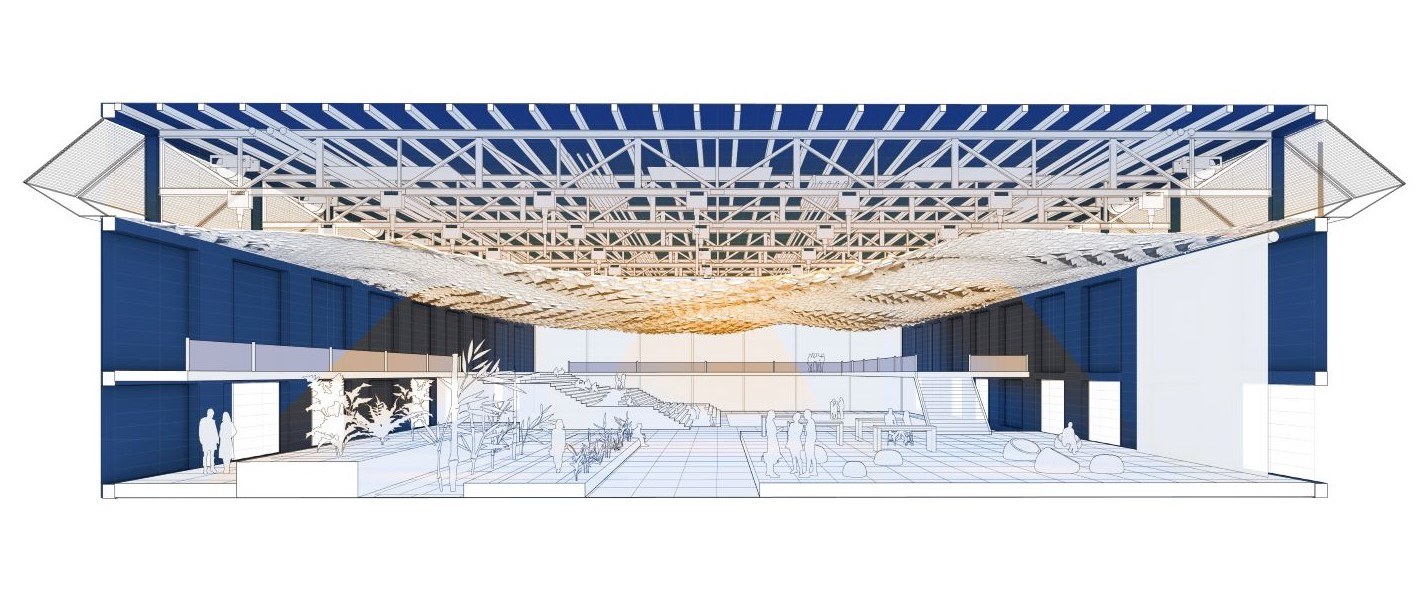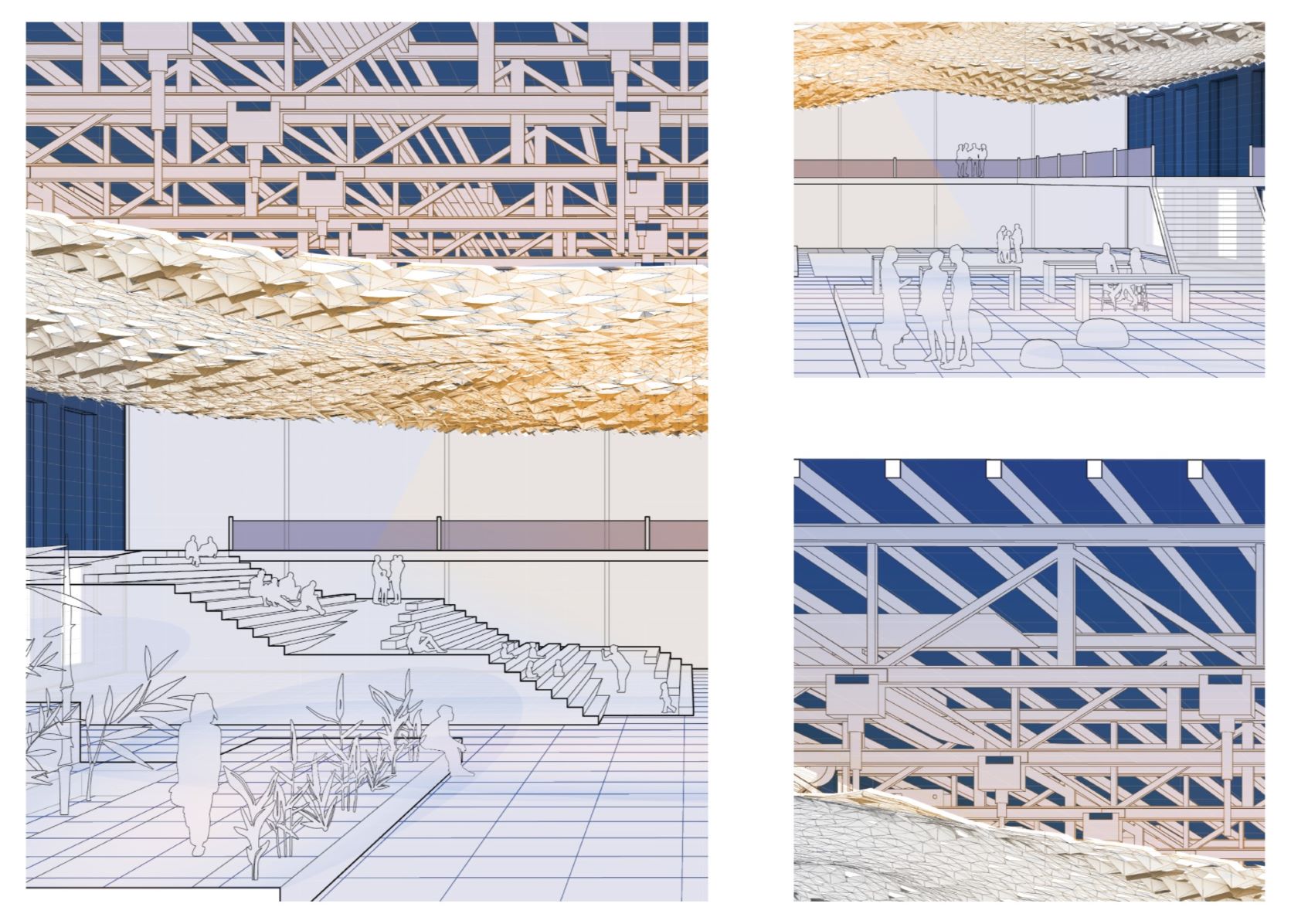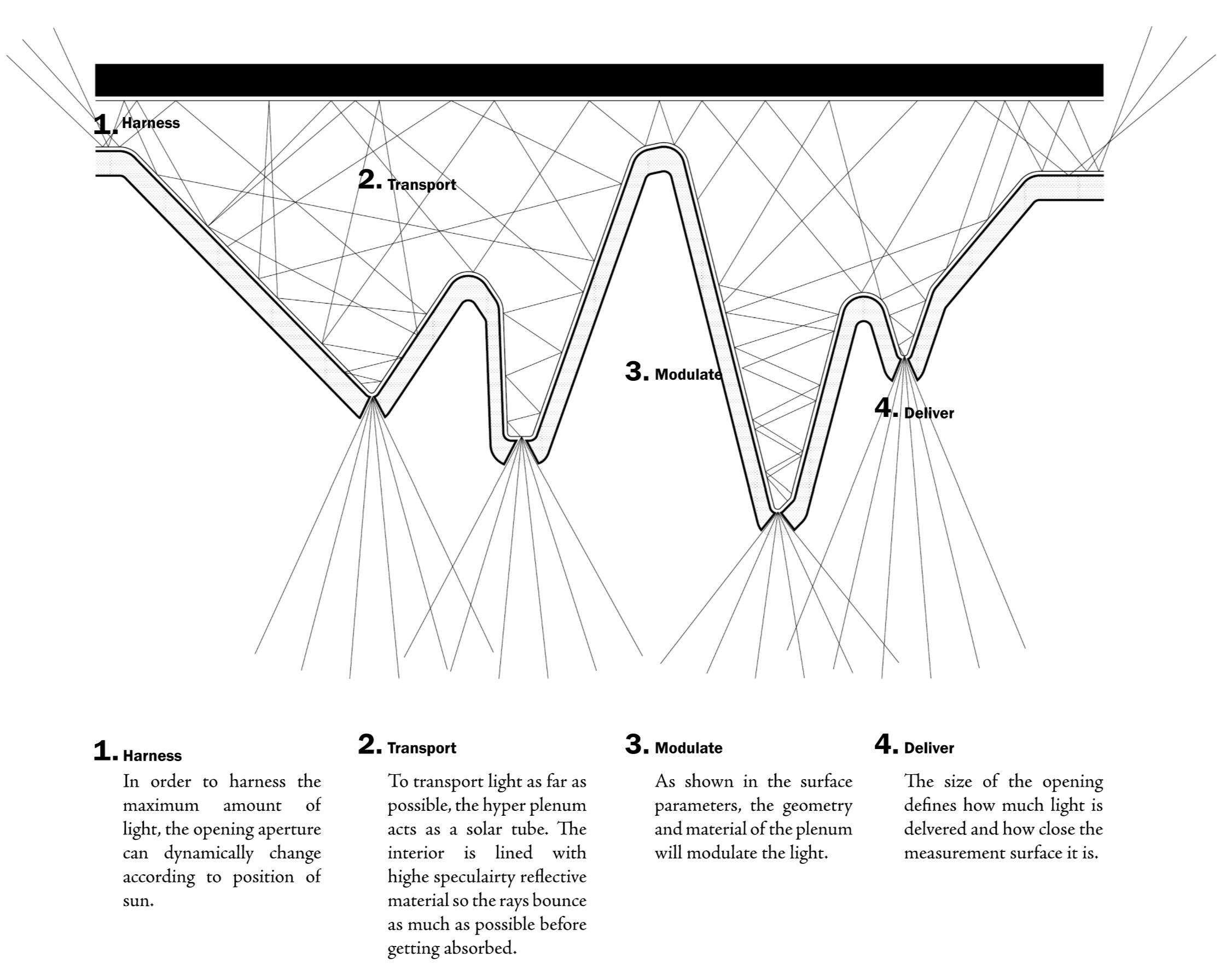What is the potential of architectural elements to modulate light within space as a way of accommodating adaptability of use? A building’s interior offers a fluctuating threshold between inhabitant and architecture where the variability and quality of light affect not only function but atmosphere. This thesis proposes a “Hyper Plenum” — an evolved ceiling surface that enhances lighting conditions for spaces with large floor plates. The intervention consists of an actuated surface that captures daylight, embodies it, and redistributes it where needed. The Hyper Plenum presents a conceptual framework for responsive architectures that give agency to — and act as an extensions of — the inhabitants and their metabolic functions.

The Hyper Plenum


Prototypes



